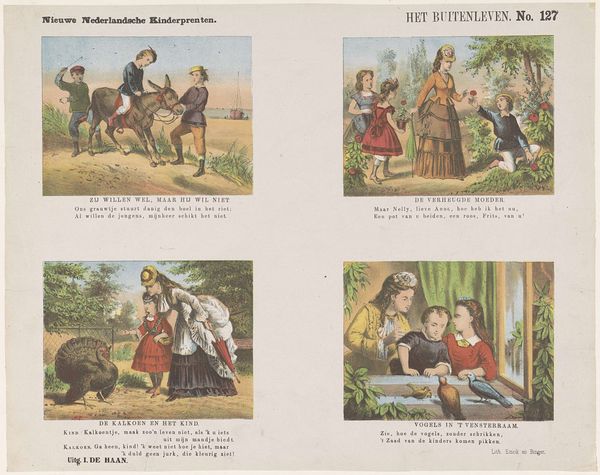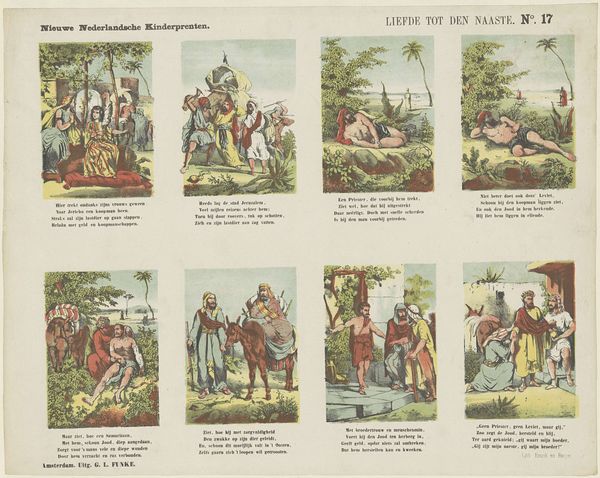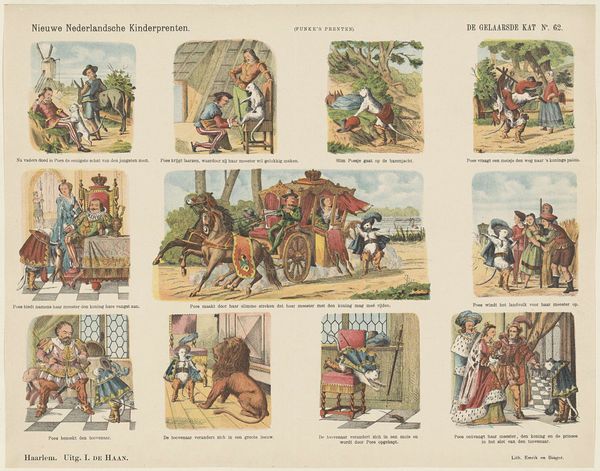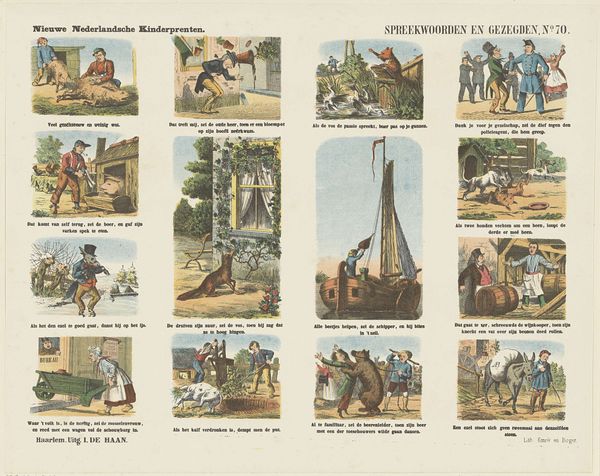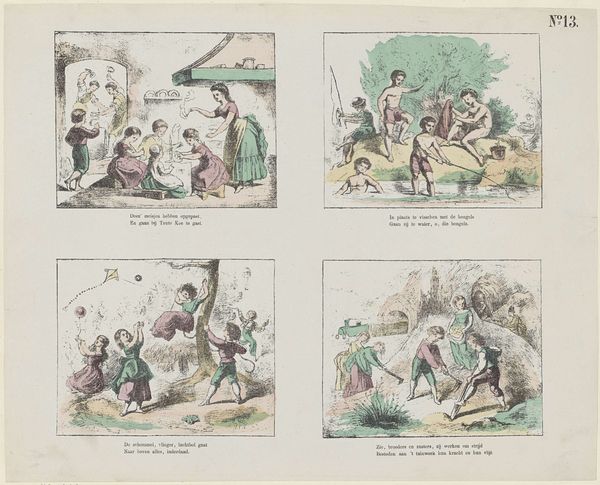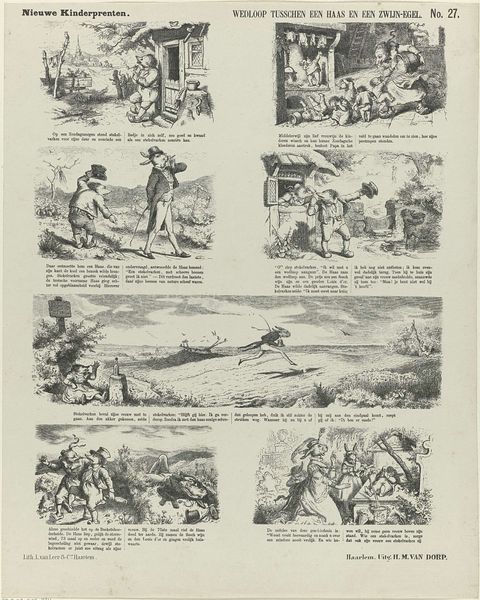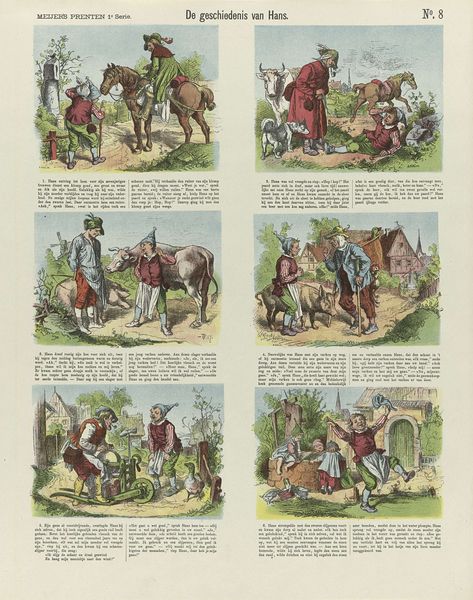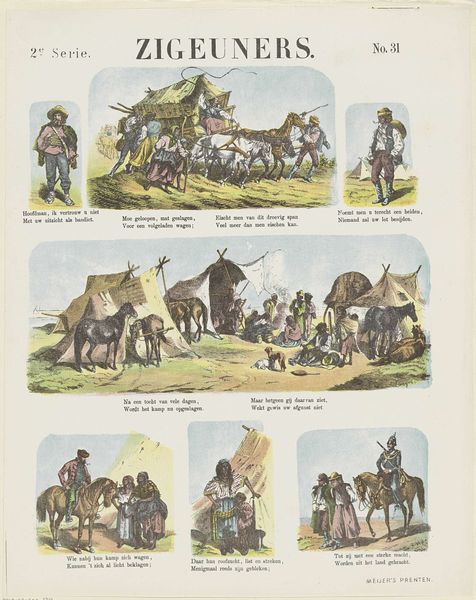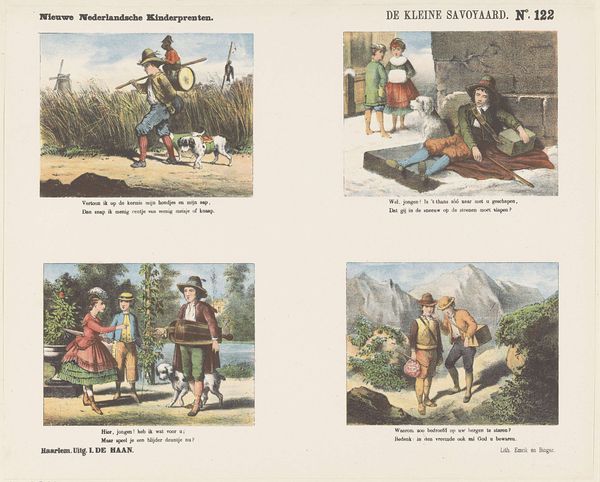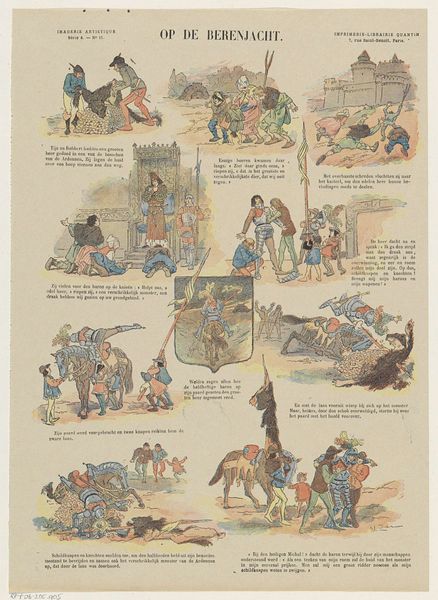
#
narrative-art
# print
#
landscape
#
folk-art
#
genre-painting
Dimensions: height 344 mm, width 428 mm
Copyright: Rijks Museum: Open Domain
Curator: This is “Jachtavonturen,” or "Hunting Adventures," a print made by Jan de Haan sometime between 1875 and 1903. What do you make of it? Editor: Oh, my. A cascade of colonialism served on a single page! Four little scenes, each a miniature drama of man versus beast in far-flung corners of the world. There’s a roughness to the print, a directness... are these meant for children? Curator: They are indeed. Part of a series of "New Dutch Children's Prints". So, mass produced, intended for wide distribution and consumption, hence the fairly simple, bold lines and use of color. Note also the textual captions below each image – reinforcing the narratives presented visually. Editor: It feels morally dubious now, of course. But I see how it reflects a worldview, or rather, an ideology. The drama's laid on thick; the illustrations give the impression of the thrilling "conquest" of wild animals as this sort of global civilizing mission. It seems to present encounters not as desperate struggles but assured victories. Curator: Exactly. The focus on the materials reinforces the social and economic structures supporting such a perspective. Paper, ink, and the printing process itself depended on industries deeply intertwined with resource extraction and colonial trade routes. Even the depiction of these "exotic" animals highlights a European fascination with the natural world as something to be cataloged, possessed, and controlled. Editor: I wonder about the impact on children. Did they read it differently, perhaps projecting their own innocent narratives onto these little dramas? Or was it really this successful at instilling a sense of cultural superiority from such a young age? Curator: It’s impossible to know for sure, but prints like these undeniably shaped the worldview of children at the time, subtly normalizing hierarchies of power and celebrating a certain brand of colonial adventure. It shows how materials can bear powerful ideological messages and shape social understanding. Editor: I'm left wondering if there’s a modern analogue—something as seemingly innocuous carrying such potent cultural baggage. Thanks for illuminating these layers. Curator: My pleasure. Analyzing "Jachtavonturen" brings the colonial implications of its production sharply into focus.
Comments
No comments
Be the first to comment and join the conversation on the ultimate creative platform.
